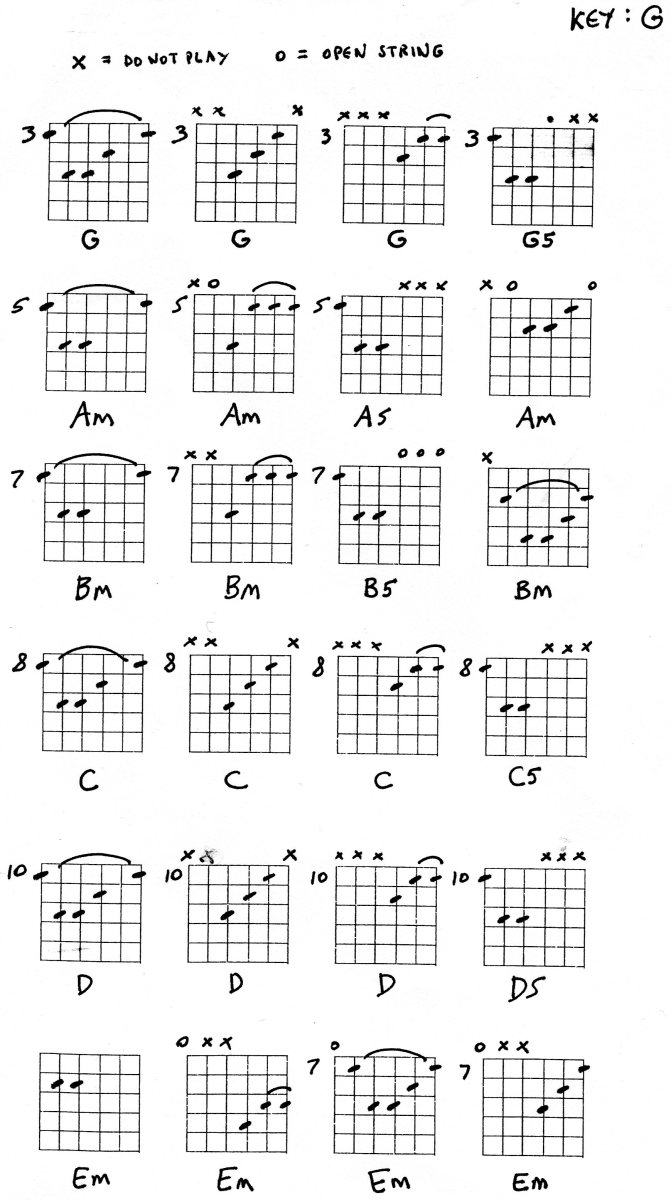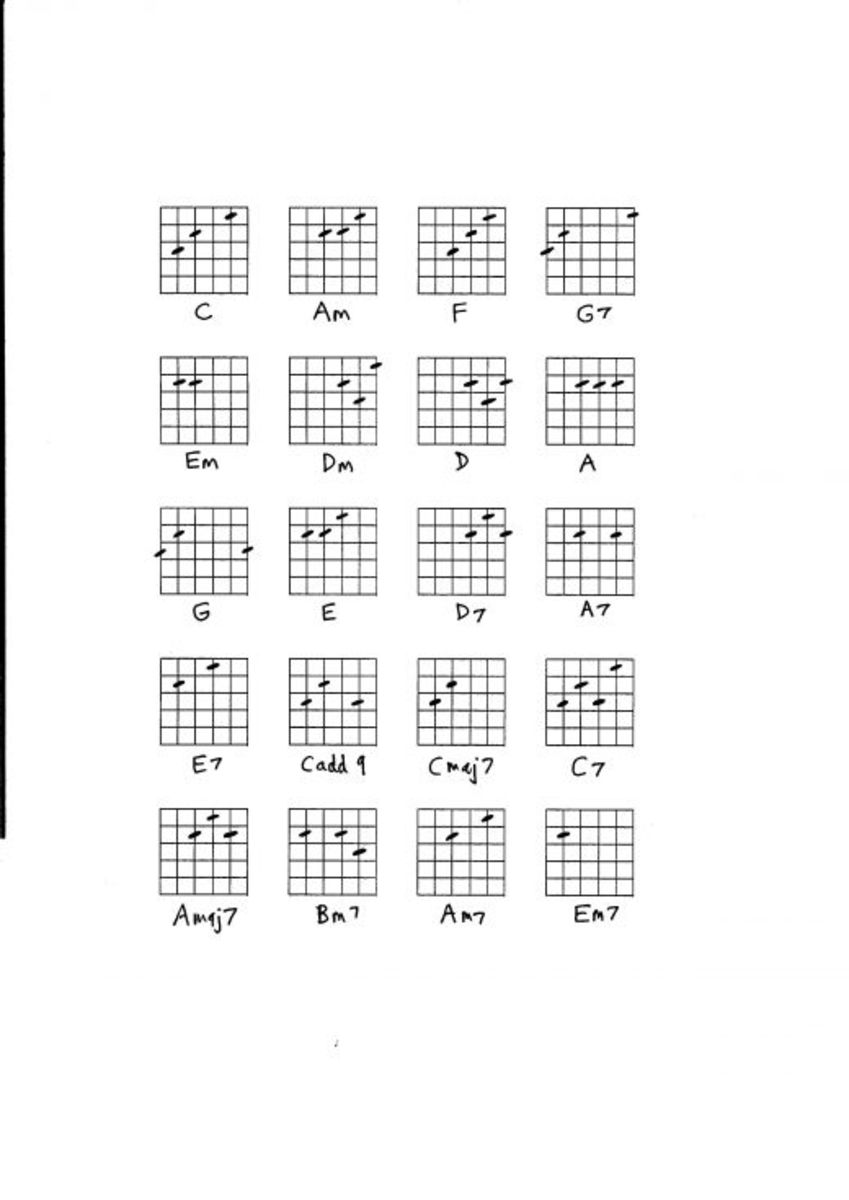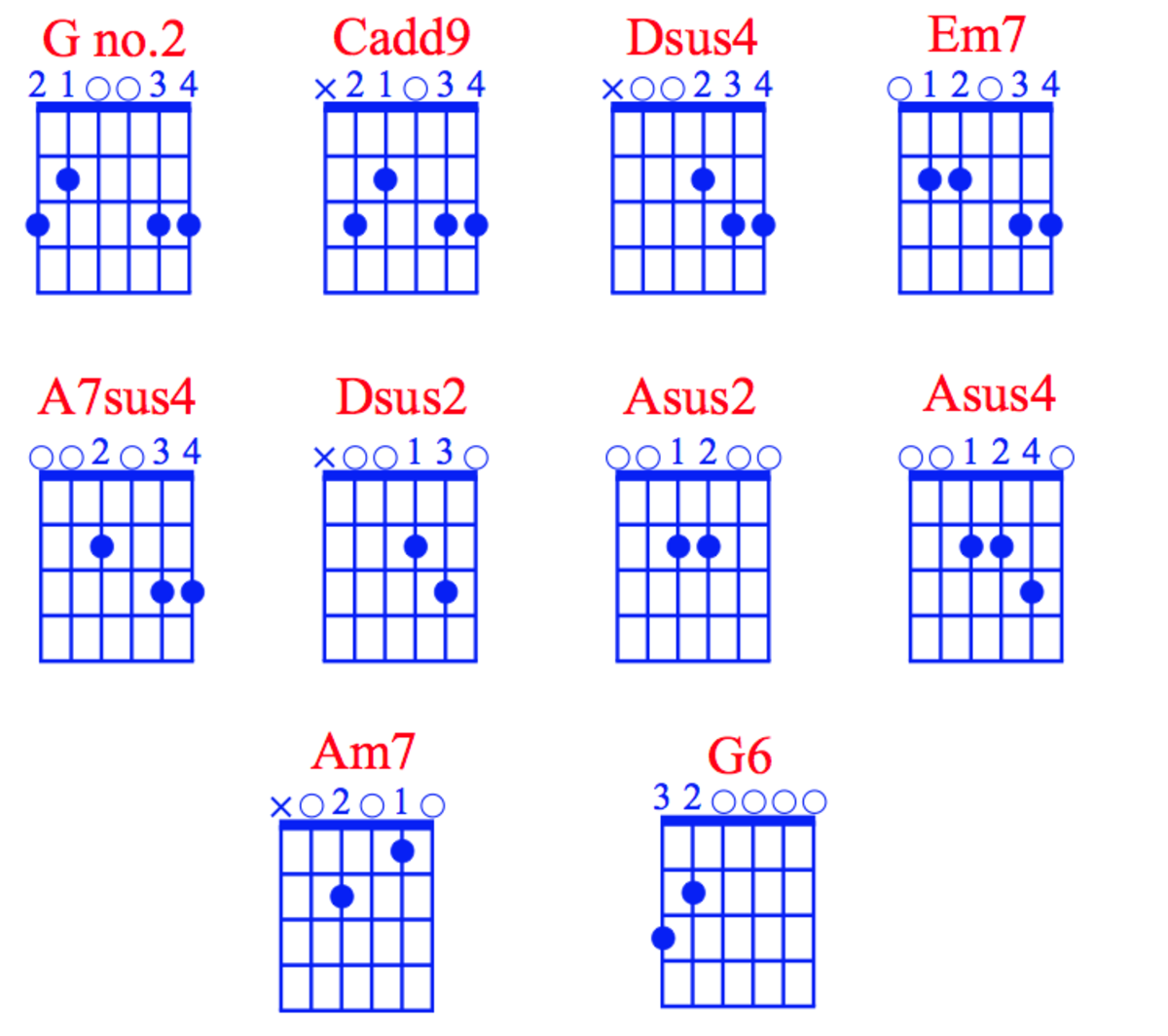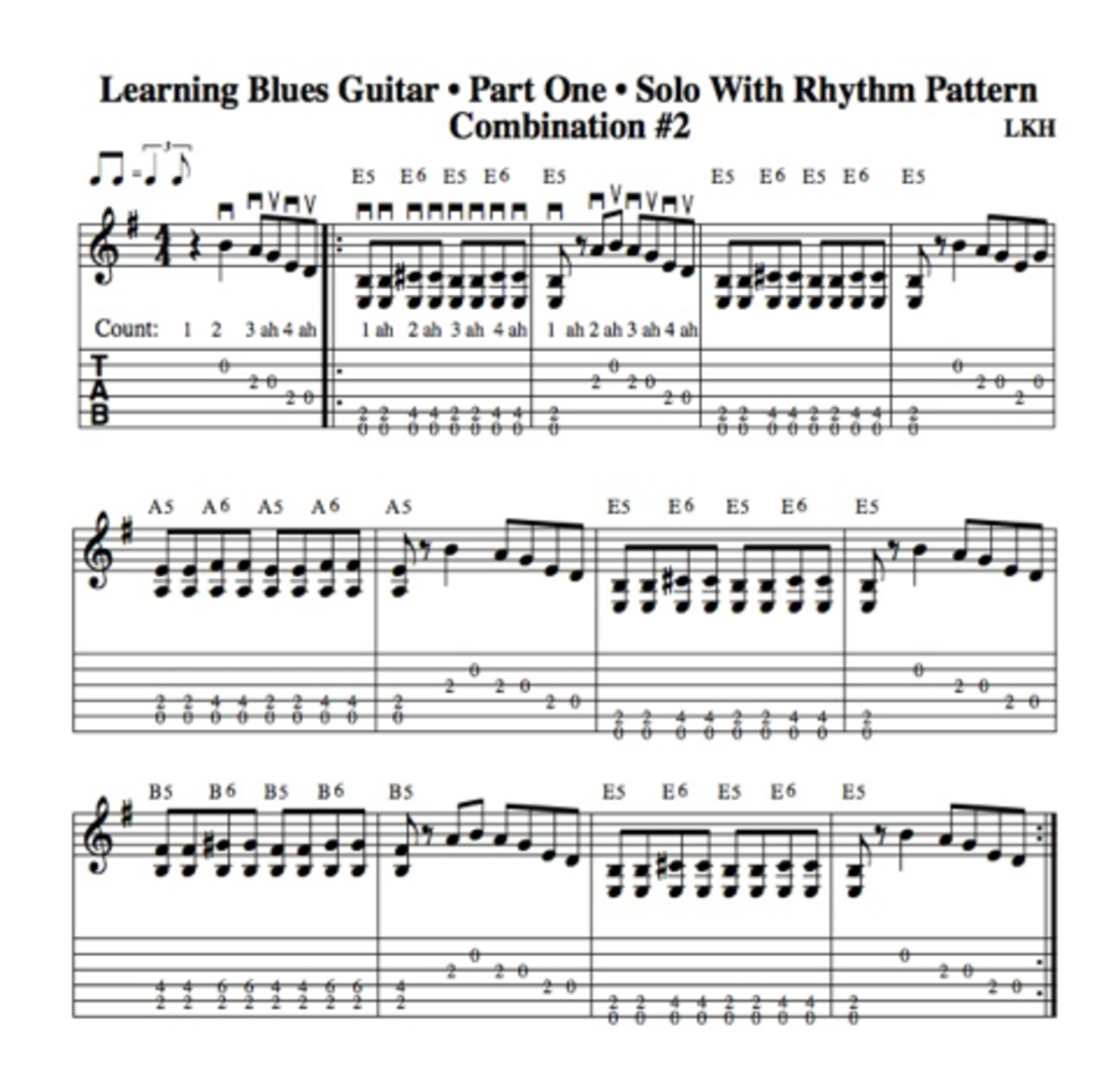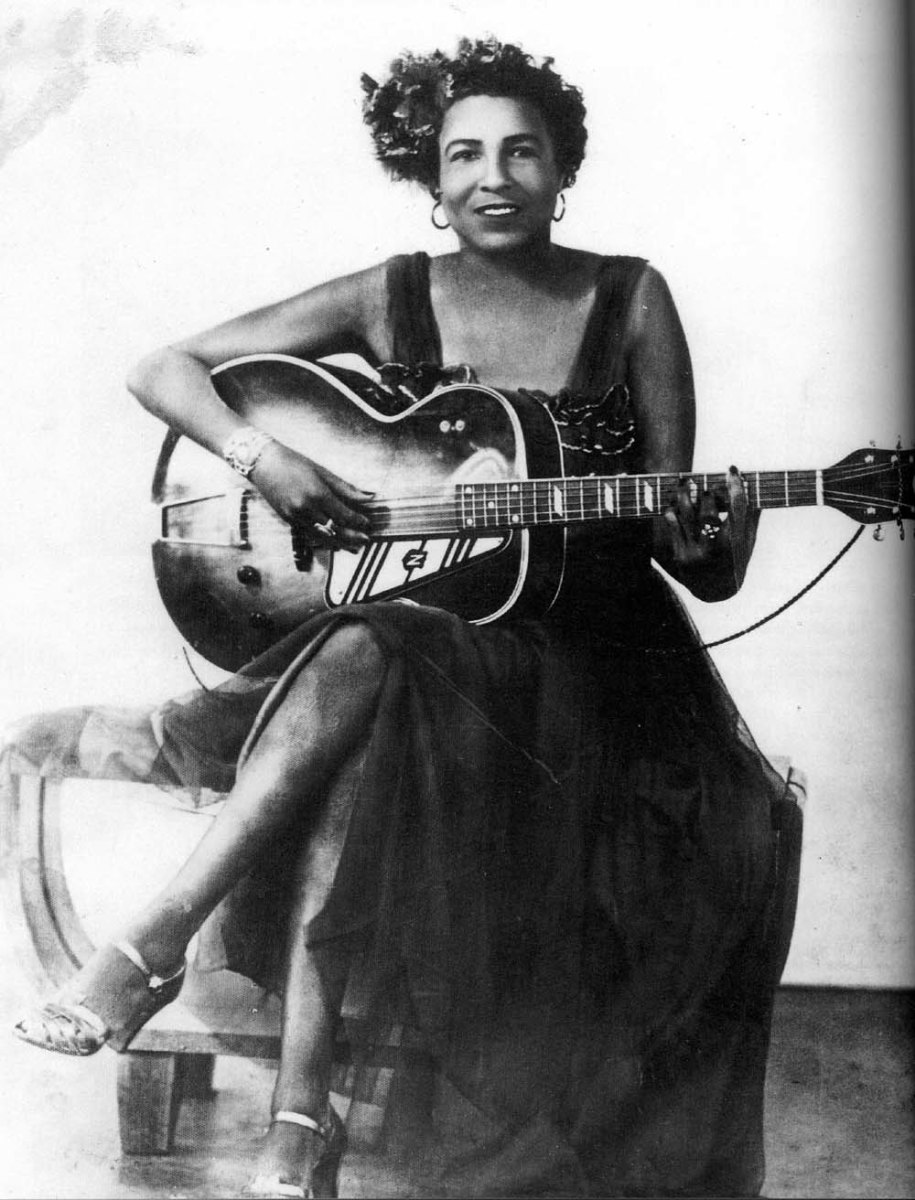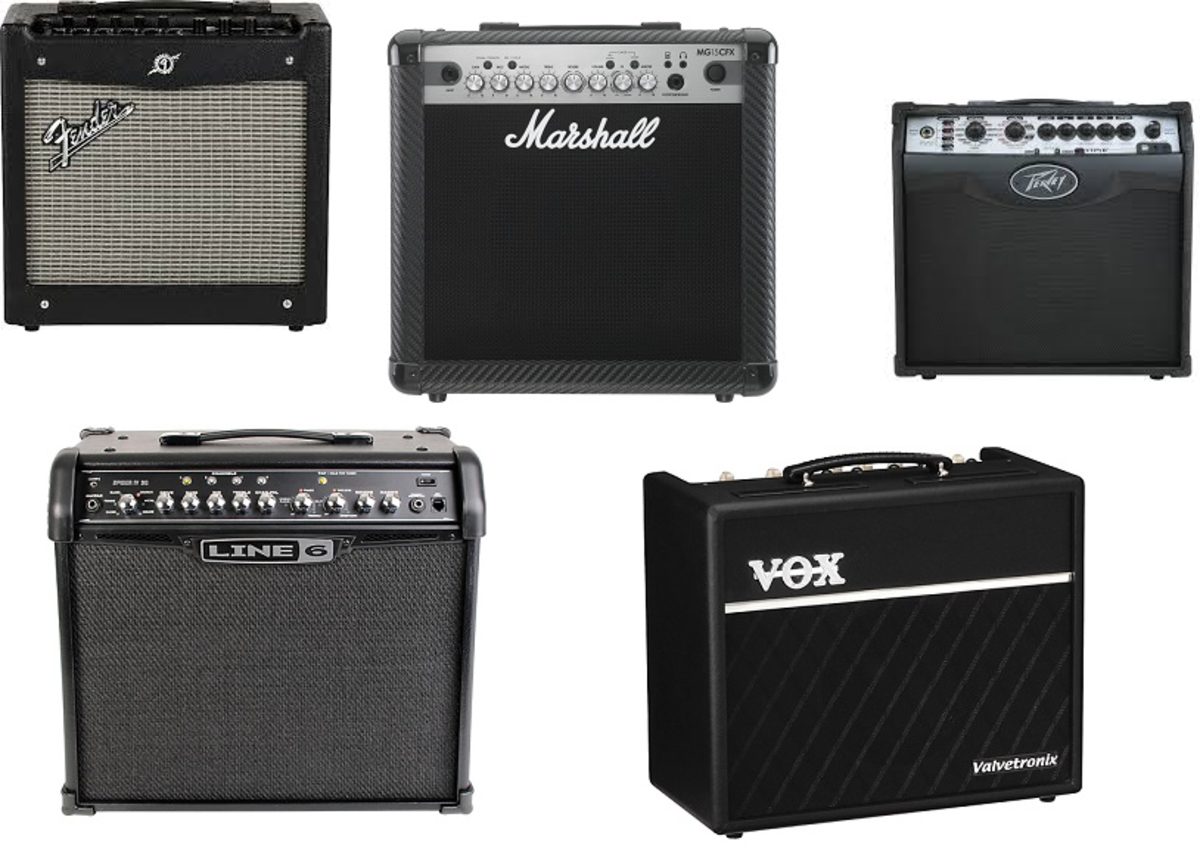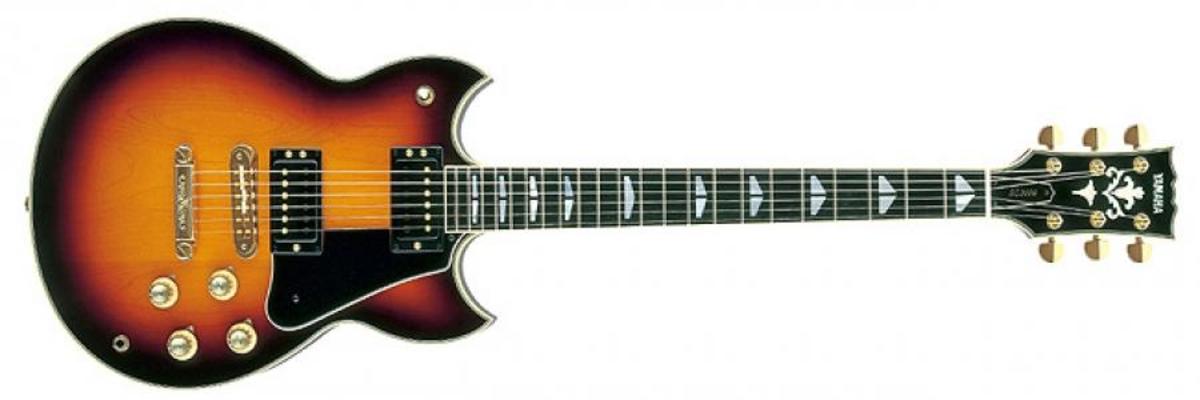Guitar Chords Theory
Guitar Chord secrets
You could play the music from The Twilight Zone to get you in the mood for this mini-guitar lesson. There are four exercises presented here, ranging from beginner level to fairly advanced.
The first example is the chord accompaniment for House of The Rising Sun, but in an easy key of Em. (E minor) You'll usually find this in the key of Am, but it's really much easier in the key of Em. Play these in 6/8 time, counting 123456 for each bar:
Em / G / A / C / Em / G / B7 / B7 / Em / G / A / C / Em / B7 / Em / B7 - see chart below
(16 Bars long)
You could then use the Em pentatonic scale given at the end to improvise over the chords.
Although it looks more complicated, there are only 5 different notes in this scale. You can make it more fluent by using pull-offs to the open strings. Twice as fast with no more effort! As Em is the relative minor of G, you could use this for any song in the key of G too.
Transferring ideas - if you want to make fast progress on the guitar, save yourself a lot of work, and understand how music theory works, you should consider this.
Now you know that Em pentatonic works with anything in the key of G and the key of Em, any riffs you learn, any bass lines etc can be used in other songs in the same key. For instance, Heart of Gold by Neil Young, Wish You were Here by Pink Floyd, Knockin' On Heaven's Door by Bob Dylan.
This is really important, transferring chord and scale info from one song to another in the same key.
Chord chart for House of The Rising Sun
Em
| G
| A
|
|---|---|---|
C
| Em
| G
|
B7
| B7
| Em
|
G
| A
| C
|
Em
| B7
| Em
|
B7
|
Guitar chord secrets
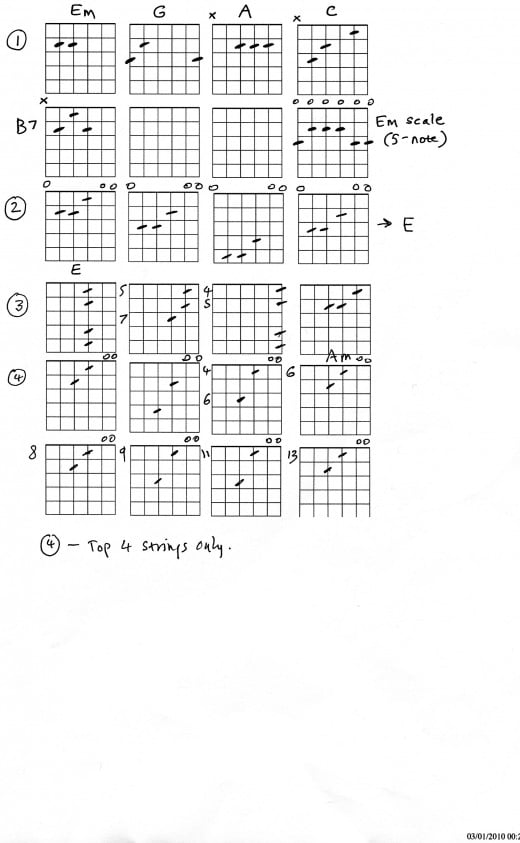
Spanish Chords
Try playing the E chord given in Ex.2, and move it up the fretboard as shown. This will give you a Spanish sounding chord progression, which you can use the A harmonic minor scale in Ex 3 to play solos over. It's not a bad idea to record the chords on a cassette recorder or digital recorder, sampler or looper - and then play solo over the chords.
A harmonic minor scale - watch out for the semitone (1 fret) intervals, and the fret numbers.
General tip - you can discover some great things by taking a chord shape such as E, C, or D and moving it it up the fretboard. They won't all work - but moving C up 2 frets will give you a D add4 on the middle 4 strings, a great sounding chord.
When I learn a new chord voicing, the first thing I do is experiment with moving it up and down the neck.
E harmonised scale, Ex.4.
I've been through the E harmonised scale in former hubs - basically the chords in the key of E, which are:
E
F♯m
G♯m
A
B
C♯m
D♯m7b5
E.
Here we are isolating the top 4 strings and playing all the chords with a drone of open strings 1 and 2 - this works because E and B are both notes in the E major scale. It sounds good, but it's relatively easy to play, and will make you more confident going up the fretboard. If you read my hubs I'm always going on about the importance of harmonised scales - the reason is, that without understanding the simple principle involved, you will never understand music theory, and never understand the guitar and piano properly. Very briefly - every note of a major scale has an associated chord built on it. You use the same scale notes and the same chords together, all the time.
Every major scale is just 7 different notes, always with the same pattern of intervals or frets. Every harmonised scale follows the same pattern too, with the lowest sounding note the same as those in the major scale.
You can e-mail any questions on this, through hubpages.com and I'll try to cover them.
Ted Greene
If you want to know all the guitar chord secrets, the instruction books by Ted Greene are a good place to start. Available at amazon.com, they are full of great chord voicings from one of the all-time greats. Ted (R.I.P) knew everything about guitar, somebody of boundless talent. Check out his playing on youtube, you'll be glad you did. Ted Greene.com is a great source of information.

